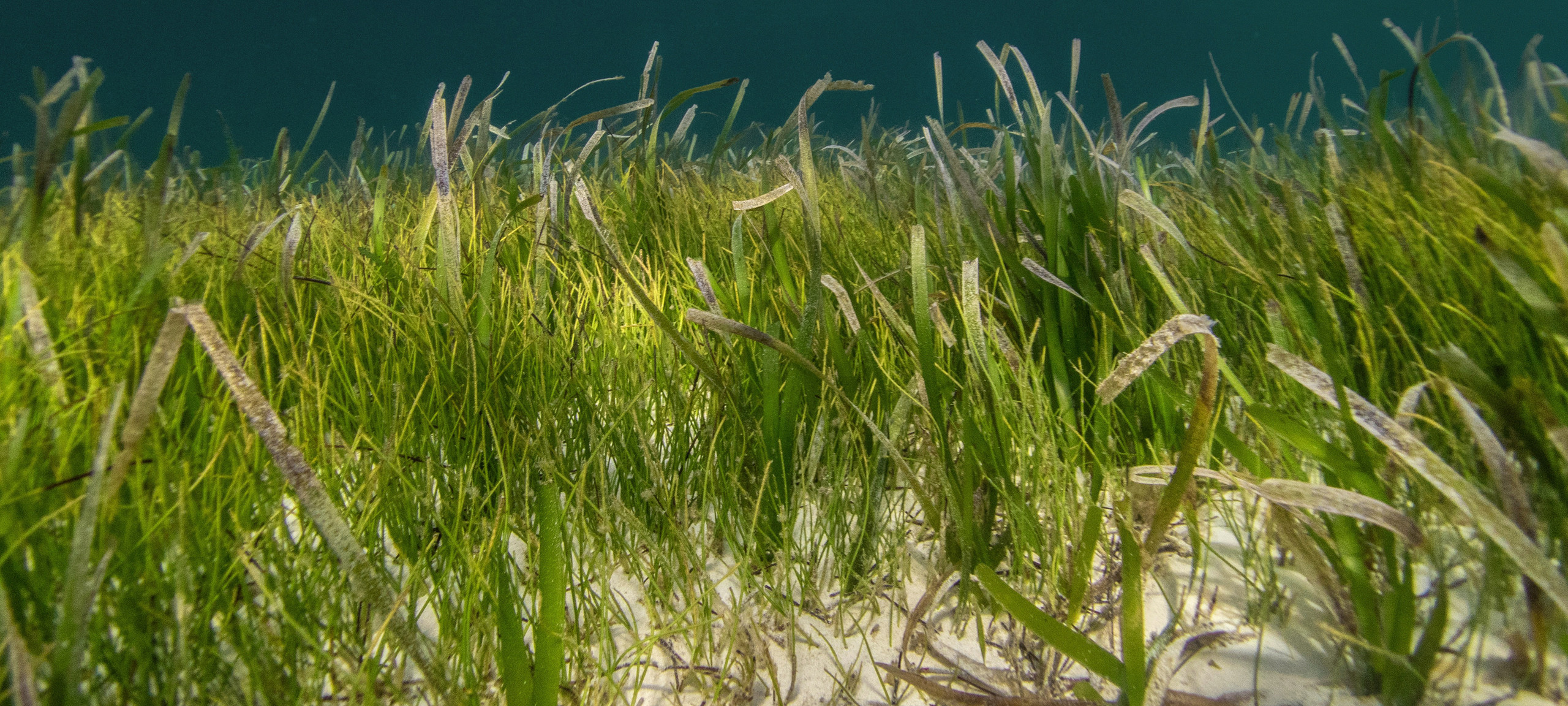
© Benjamin Jones Unsplash
SEA LIGHTS
The gentle swaying of the seagrass
Seagrass meadows provide a habitat for numerous animals and play a key role in climate protection. A short dive into one of the most valuable and at the same time most fragile natural landscapes on our coasts.
A world of swaying lianas stretching upwards towards the light. Green, thin and sometimes very long stalks, gently swaying, they could be part of an illustration. There are many of them, close together in a small space. As the diver approaches, she can already see the first members of the community that lives in this world.
Just ahead, herring eggs hang from individual stalks, in a clearing next to them a shore crab meticulously segments its prey, a few centimetres further on a brittle star moves across the sandy bottom with its five arms and full of vigour. Further back, the needle of a garfish might peek out of the thicket, but it disappears again immediately. The green vibrates incessantly, it is pleasantly bright in the shallow water.
© Jana Koerth
“The functions of seagrass are diverse and its effect is evident.”
Dr Jana Koerth
In recent decades, large parts of the world's coastal seagrass stocks have declined, partly due to infestation by parasites and disease, and partly due to ever-increasing utilisation pressure caused by humans.
It is worth protecting and restoring seagrass. The functions of seagrass are diverse and its effect is evident. Seagrass offers the biocoenosis protection from predators and nest predators. The animals find food here, not only the biomass of the grass itself, but also other tasty food due to the great biodiversity in the meadow. Seagrass produces oxygen and releases it into its water environment, thereby helping to reduce oxygen depletion. Seagrass stores carbon dioxide both in its leaves and in its underground rhizomes. It is considered an important CO2 sink as it removes the greenhouse gas from the atmosphere relatively quickly. By reducing wave energy, seagrass meadows protect the soil from erosion and therefore also have a coastal protection function. Functioning coastal biotopes such as seagrass meadows also have a cultural significance, creating identification not only for snorkellers but also for beach walkers. We live in an age in which ecosystems provide services. Let us also protect the seabed forest for its own sake.
Dr Jana Koerth
… is a marine conservation officer at the state capital of Kiel. She is particularly interested in the diverse interactions between the sea and humans. Here she shows moments of these interactions.
Website:
© Dr. Jana Koerth
Acquire article rights
